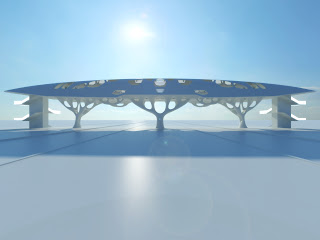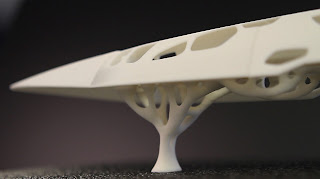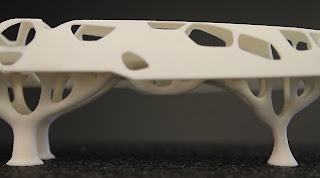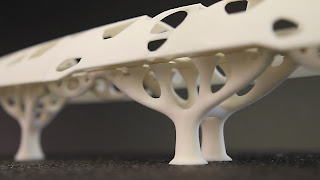|
Today’s guest blog comes from Luca Frattari, AEC business development manager at Altair Engineering. How is possible to create this Structural Form? It’s hard to find the correct definition; certainly it’s very difficult to describe the essence of Structural Form, because it is totally influenced by two such precise concepts -- Structure and Form. Interesting examples might be represented by the study of Greek architecture, in which Structure and Form were strictly connected. It is possible to say that Greek Structural Form stems from mathematical rules and have produced a kind of beauty when the rules were used in Architecture. Technology has shown how much the form of an object is influenced by its structure and how much the structure of the same object is influenced by the form of its fundamental parts. Thinking about a crystal of snow, the borderline between structure and form seems to be very thin; it almost disappears. The main aim of the PEGASUS bridge project was to create a Structural Form exploiting the potential of numerical analysis with new concept design tools and rapid prototyping systems. The proposed bridge has been designed to cross Big Beaver Road (Troy, Michigan, USA). The project has been focused mainly on the development of an organic-like structure that satisfies structural and aesthetic criteria exploiting the application of Altair’s technology in Architecture creating a strong interaction between CAE, CAD and RP systems. Altair’s solidThinking Inspire, Optistruct and HyperMesh have been used to define the support structure (50 meters long) and its shelter. The developed methodology is based on five easy steps: (1) Creation of a standard steel-deck. (2) Finding the architectural Structural Form of columns and shelter by using a topology optimization procedure. (3) Skin (columns) and Shelter re-design. (4) Improve skin by using size optimization to reduce the thickness of the steel components saving material without compromising on the structural performance. (5) Verification of the entire structure subjected to standard design actions. The creation of a 3D printed model has amplified the perception of the bridge in a real environment, allowing a complete evaluation of the streamlines. Complex structures such as the results of a form-finding procedure, parametric and generative approaches require, as condition sine qua non, a further step after the virtual visualization to be totally perceived in the space. A ZPrinter model has brought PEGASUS to life; I like to say it has given him wings. The main reason is because Structural Forms like PEGASUS need two kinds of restitutions to be completely appreciated: virtual 3D and real 3D visualizations. It is unbelievable how much attention a 3D printed model can capture simply standing on a desk during an architectural exhibition. Read more: How to Create Structural Forms with 3D Printing PEGASUS Bridge |
Powered by DigitalFactory
© 2006-2025 Kraftwurx, Inc. All rights reserved.







